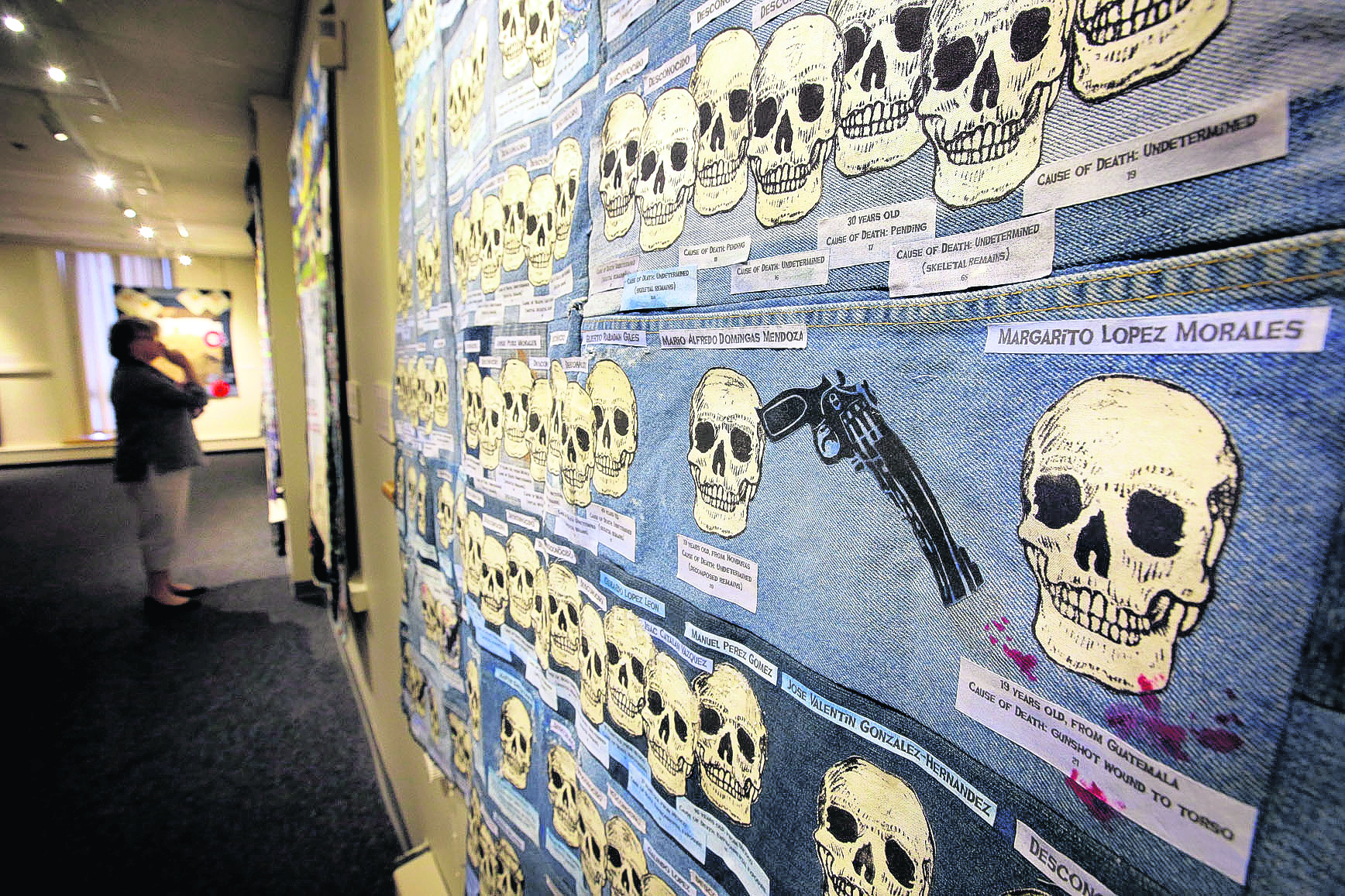
By MARK PRATT
Associated Press
BOSTON (AP) — A powerful exhibition of quilts memorializing migrants from Mexico and Central America who have died in the southern Arizona desert in the past 20 years is on display amid intense national debate over immigration policy. Seventeen quilts from the Migrant Quilt Project are currently hanging in the New England Quilt Museum in Lowell, Massachusetts, in a display that runs until July 15. The goal is to move the immigration debate beyond statistics and political sniping and put the plight of real people in the spotlight.
“My hope is to show the enormity of this humanitarian crisis,” project founder Jody Ipsen said. “I don’t think people understand. I want people to look at these quilts and feel compelled to act and to support humanitarian immigration reform.” The project was inspired when Ipsen was camping in the Arizona desert with a friend and came across a way station for migrants who had crossed the border. The desert was strewn with their trash — bottles, diapers, personal hygiene products and clothing. Ipsen was at first appalled by the desecration of the pristine desert. But she was also curious. What, she wondered, drives people to risk their lives to cross a dangerous desert, at the mercy of human smugglers, to come the U.S.?
“It’s ruthless out there in that desert,” she said. Inspired by the AIDS Memorial Quilt, she started collecting the discarded clothing and recruited textile artists to incorporate the fabric into quilts. Ipsen even pitched in on one. There has been one quilt produced by volunteers per federal fiscal year since 2000, 17 in all. While each quilt has a different design and they vary in size, there are some common themes. They’re all emblazoned with the names of every person who died in the desert that year — or, if that person’s name was not known to authorities, with the word “desconocido,” Spanish for stranger. Recorded deaths range from 122 to 282 per year.
Most of the quilts are also covered with religious and cultural imagery, flowers and skulls.
The 2009-2010 quilt is reminiscent of the U.S. flag. The names of border crossers who died are written on the white stripes, and in the place of the white stars on a blue field, the upper left corner is a deserted road that disappears into the distance beneath a starry sky. Quilts may connote comfort and warmth to most people, but there’s a history of using them to make social
and political points, said Nora Burchfield, the museum’s executive director. Quilts have been made for the abolitionist, temperance, and environmental movements and, more recently, in response to gun violence. “There is a long tradition of using the quilt-making process to bring attention to social causes because women didn’t have any other outlet to express their concerns, outrage, and opinions,” Burchfield said.
“They could say on a quilt all the things they weren’t given a platform to say.” Lowell is an appropriate place for the exhibit because the modern-day city of more than 110,000 residents
was built on immigrant power, from the Irish who dug the city’s famed canals, to the French-Canadians, Greeks, Portuguese and others who worked in the mills in the 19th century, to the Cambodian and Latin American immigrants who came in the 20th century. More recently, refugees from Iraq, Somalia, Afghanistan, Burma, and Syria have resettled in the city,
according to the Lowell branch of the Immigration Institute of New England , an immigration advocacy group.
The quilts tell the story of immigration that many people don’t hear or find uncomfortable, said Rogers Muyanja, community relations manager for the organization. “It’s important for people to see an exhibit like this and learn about things they don’t have much information about,” he said. And beyond the social implications of the quilts, there’s one other reason to see them.
“They are beautiful,” Burchfield said.



















